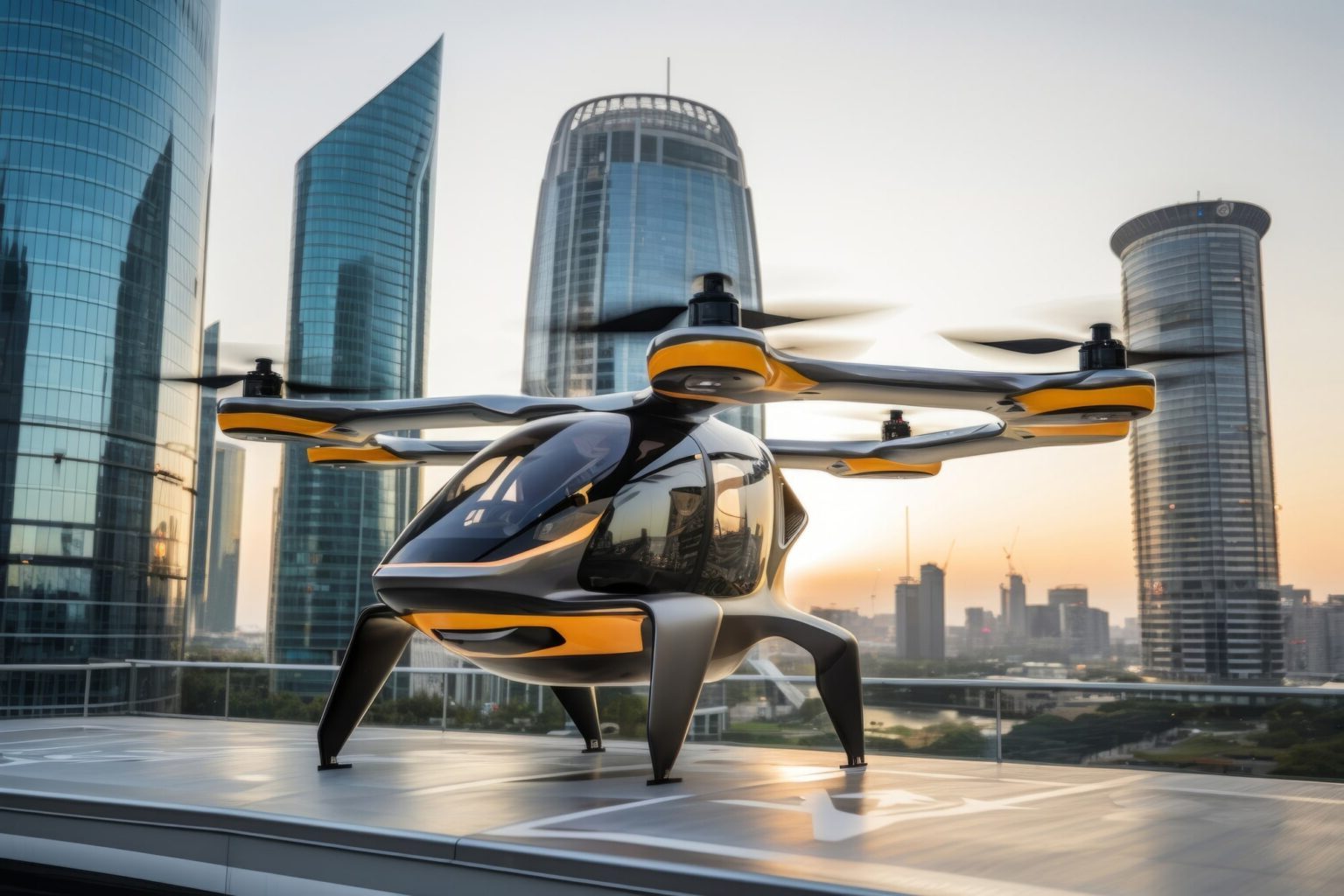
Urban Air Mobility (UAM) is transforming how we think about transportation in cities. What is Urban Air Mobility? UAM refers to the use of air vehicles, like drones and electric vertical takeoff and landing (eVTOL) aircraft, to move people and goods in urban areas. Imagine zipping over traffic jams in a flying taxi or having packages delivered by drones. This technology promises to reduce congestion, cut travel times, and lower emissions. Companies like Uber, Airbus, and Boeing are investing heavily in this futuristic mode of transport. UAM could revolutionize urban living, making cities more connected and efficient.
Key Takeaways:
- Urban Air Mobility (UAM) uses electric aircraft to fly people and goods above cities, reducing traffic and emissions while improving travel times and accessibility.
- Despite challenges like regulations and public acceptance, the future of UAM looks bright, with the potential for widespread adoption and integration with existing transportation systems.
What is Urban Air Mobility (UAM)?
Urban Air Mobility (UAM) refers to the use of air transportation systems to move people and goods within urban areas. This concept aims to alleviate traffic congestion and reduce travel times by utilizing the airspace above cities.
-
UAM involves electric vertical takeoff and landing (eVTOL) aircraft. These vehicles can take off and land vertically, making them ideal for urban environments where space is limited.
-
UAM aims to reduce traffic congestion. By moving transportation to the skies, UAM can help alleviate the gridlock that plagues many cities.
-
UAM can be more environmentally friendly. Electric-powered aircraft produce fewer emissions compared to traditional gasoline-powered vehicles.
The Technology Behind UAM
The technology driving UAM is both innovative and complex. It combines advancements in aviation, electric propulsion, and autonomous systems.
-
eVTOL aircraft are a key component. These aircraft use electric motors for propulsion, which are quieter and more efficient than traditional engines.
-
Autonomous flight systems are being developed. These systems aim to make UAM aircraft capable of flying without human pilots, increasing safety and efficiency.
-
Advanced air traffic management systems are essential. These systems will help manage the increased air traffic in urban areas, ensuring safe and efficient operations.
Benefits of Urban Air Mobility
UAM offers numerous benefits, from reducing travel times to improving air quality. Here are some of the key advantages.
-
Reduced travel times. UAM can significantly cut down on travel times by bypassing ground traffic.
-
Improved air quality. Electric aircraft produce fewer emissions, contributing to cleaner air in cities.
-
Increased accessibility. UAM can provide transportation options for areas that are difficult to reach by traditional means.
Challenges Facing UAM
Despite its potential, UAM faces several challenges that need to be addressed before it can become a reality.
-
Regulatory hurdles. Governments need to develop regulations for UAM operations, which can be a complex and time-consuming process.
-
Public acceptance. People need to feel comfortable with the idea of flying taxis and other UAM vehicles.
-
Infrastructure development. Cities need to build the necessary infrastructure, such as vertiports, to support UAM operations.
The Future of Urban Air Mobility
The future of UAM looks promising, with many companies and governments investing in this technology. Here are some predictions for what the future might hold.
-
Widespread adoption of eVTOL aircraft. As technology improves and costs decrease, eVTOL aircraft could become a common sight in urban skies.
-
Integration with other modes of transportation. UAM could be integrated with existing transportation systems, providing seamless travel options for city dwellers.
-
Continued advancements in technology. Ongoing research and development will lead to even more efficient and capable UAM systems.
The Future of Urban Air Mobility
Urban Air Mobility is more than just a futuristic concept. It's already shaping how we think about transportation in cities. With electric vertical takeoff and landing (eVTOL) aircraft, we can expect quieter, cleaner, and faster commutes. Companies like Uber Elevate and Airbus are leading the charge, investing heavily in this technology.
Safety remains a top priority, with rigorous testing and regulations ensuring these aircraft meet high standards. Infrastructure is another key factor, with plans for vertiports and charging stations already in the works.
As technology advances, costs will likely decrease, making UAM accessible to more people. This shift could reduce traffic congestion and pollution, making urban living more sustainable.
Urban Air Mobility isn't just a dream; it's becoming a reality. Keep an eye on this space—exciting developments are on the horizon.
Frequently Asked Questions
Was this page helpful?
Our commitment to delivering trustworthy and engaging content is at the heart of what we do. Each fact on our site is contributed by real users like you, bringing a wealth of diverse insights and information. To ensure the highest standards of accuracy and reliability, our dedicated editors meticulously review each submission. This process guarantees that the facts we share are not only fascinating but also credible. Trust in our commitment to quality and authenticity as you explore and learn with us.


